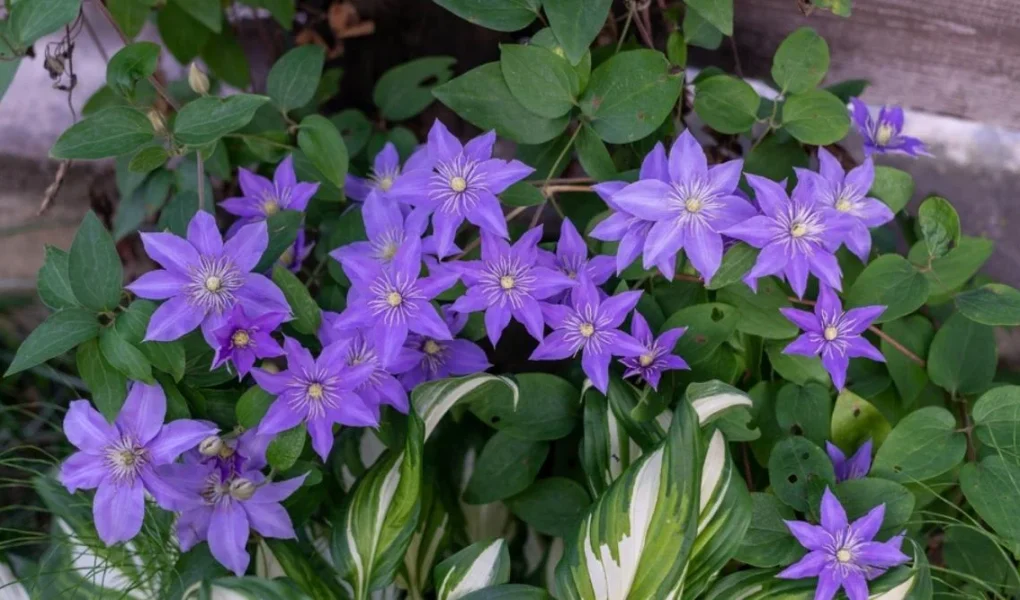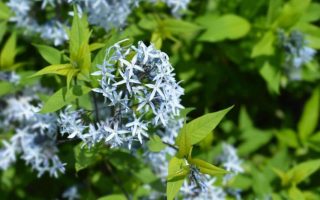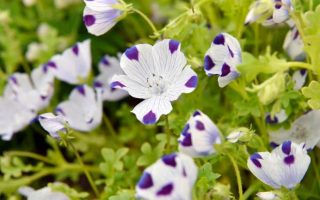lareddepathways.com – The Clematis is a beloved flowering vine known for its dramatic, beautiful blooms and ability to add vertical interest to any garden or landscape. With a wide variety of species and cultivars, the clematis is one of the most versatile plants for gardeners who wish to create stunning displays of color and texture. Whether grown on trellises, fences, or arbors, clematis flowers provide an elegant and eye-catching addition to gardens of all sizes.
Botanical Description
Clematis belongs to the Ranunculaceae family and consists of about 300 species, many of which are hybridized to create an even wider range of flower forms, colors, and growth habits. Clematis flowers come in nearly every color of the rainbow, from vibrant blues and purples to soft pinks, whites, reds, and even bi-colored variations. The blooms range in shape, from star-like petals to rounded, bell-shaped flowers, offering great diversity to gardeners.
Most clematis vines grow rapidly and can reach heights of 6 to 15 feet, depending on the variety. The plant’s leaves are typically opposite, compound, and often have a delicate, lacy appearance. Clematis can be deciduous or evergreen, with most species shedding their leaves in winter, while a few retain foliage year-round in mild climates.
The flowers themselves are composed of 4 to 8 sepals (petal-like structures), which can vary in size and shape, depending on the cultivar. Clematis flowers typically bloom in late spring to early fall, with some varieties producing a second round of blooms in late summer.
Habitat and Growth Conditions
Clematis vines thrive in USDA hardiness zones 4 to 9 and are best suited for temperate climates. They prefer well-drained, fertile soil that is rich in organic matter. While clematis enjoys full sun for at least 6 hours a day to produce the best blooms, it also requires cool, shaded roots to prevent overheating. To provide this balance, gardeners often plant clematis near shrubs or taller plants that can offer some shade to the plant’s base, while the vines themselves can climb toward the sunlight.
Good soil drainage is essential to prevent root rot, a common issue for clematis plants. Additionally, clematis does best in slightly acidic to neutral soil with a pH between 6.0 and 7.0. Mulching around the base of the plant helps to keep the roots cool and retain moisture, especially during hot summer months.
Cultivation and Care
Clematis vines are relatively easy to grow with the right care. Planting clematis involves choosing the right location, providing proper support for climbing, and ensuring the plant receives adequate nutrients. Here’s a breakdown of the essential care steps:
- Planting: When planting clematis, dig a hole that is large enough to accommodate the roots. The crown of the plant should be planted 2 to 4 inches below the soil surface. This encourages the development of strong roots and prevents the plant from being too exposed to extreme temperatures. After planting, water thoroughly to help establish the roots.
- Support Structures: Clematis is a climbing vine, and it requires support to grow vertically. Provide sturdy trellises, fences, or arbors for the vines to climb. As the plant grows, it will naturally twine around these structures. Be sure to check the vines regularly to prevent them from becoming tangled or broken.
- Watering: Clematis plants need regular watering, especially during dry spells. However, they do not like to sit in soggy soil. Water the plant deeply and consistently, allowing the soil to dry out slightly between waterings. Avoid wetting the foliage, as this can encourage fungal diseases.
- Fertilizing: Clematis benefits from a balanced, slow-release fertilizer applied in early spring when new growth begins. Be cautious about over-fertilizing, as this can lead to excessive leaf growth at the expense of flowering. A high-phosphorus fertilizer can be used in the bloom period to encourage better flower production.
- Pruning: Pruning is a key component of clematis care and is done based on the group classification of the plant. Clematis plants are typically divided into three pruning groups based on their flowering habits:
- Group 1: Blooms on old wood, typically pruned immediately after flowering.
- Group 2: Blooms on both old and new wood, and should be pruned lightly in late winter or early spring.
- Group 3: Blooms on new wood, and should be cut back to the ground in late winter or early spring.
- Mulching: Mulching around the base of the clematis helps retain moisture, regulate soil temperature, and prevent weed growth. Use organic materials like wood chips, bark, or compost to mulch around the plant’s roots.
Symbolism and Cultural Significance
Clematis flowers carry a range of symbolic meanings, depending on the culture and context. In the language of flowers (floriography), clematis represents mental beauty, ingenuity, and artistic talent, making it a popular flower for gifting to those who appreciate creativity. Its climbing nature can also symbolize love, devotion, and spiritual growth, making it a meaningful addition to weddings and celebrations.
In Victorian times, clematis was often associated with assertiveness and adventure, admired for its ability to grow vigorously and reach great heights. It remains a symbol of resilience and the pursuit of one’s goals.
Ecological Benefits
Clematis is a valuable addition to any garden, not only for its aesthetic beauty but also for its ecological benefits. The plant attracts a variety of beneficial insects, including bees, butterflies, and hummingbirds, which are drawn to the nectar-rich flowers. By planting clematis in a pollinator-friendly garden, you can contribute to the health of local ecosystems and support biodiversity.
Additionally, clematis can be used as part of natural erosion control, especially when planted on slopes or embankments. Its dense foliage helps to stabilize soil and reduce water runoff, which can improve soil health and prevent erosion.
Ornamental Uses
Clematis is a versatile plant that can be used in many different ways within the landscape. Its climbing nature makes it an excellent choice for trellises, fences, arbors, and pergolas, where it can create a striking vertical garden display. Clematis can also be grown in containers, where it can be trained to climb over obelisks or poles.
Clematis pairs beautifully with other climbing plants, shrubs, and perennials. It is often used in combination with roses, jasmine, or wisteria, where their contrasting blooms can create stunning floral compositions. In the garden, clematis vines can serve as focal points, framing windows or gates, or providing a burst of color at the end of a pathway.
As a cut flower, clematis can be used in bouquets and arrangements, adding a touch of elegance and sophistication to any floral display.
Conclusion
Clematis is a truly magnificent plant, with its wide range of species, colors, and forms making it a versatile addition to any garden. Whether it’s used to cover a fence, climb an arbor, or adorn a trellis, clematis provides beauty and structure to gardens of all types. With its symbolic meanings of love, devotion, and artistic talent, clematis continues to captivate gardeners and flower enthusiasts alike. When cared for properly, clematis can thrive for many years, offering a stunning, long-lasting display of flowers that transforms any outdoor space.




